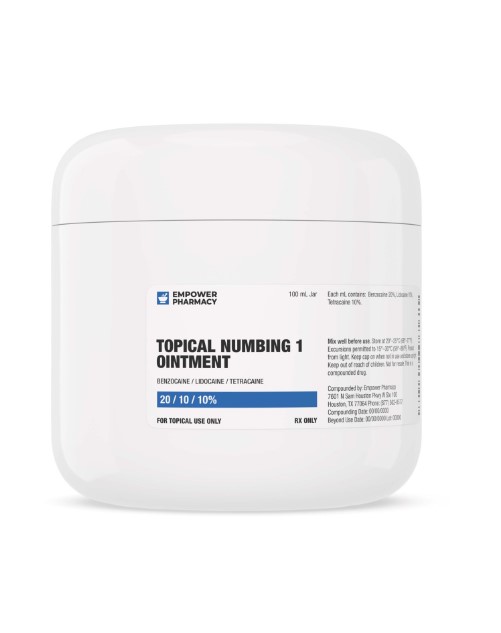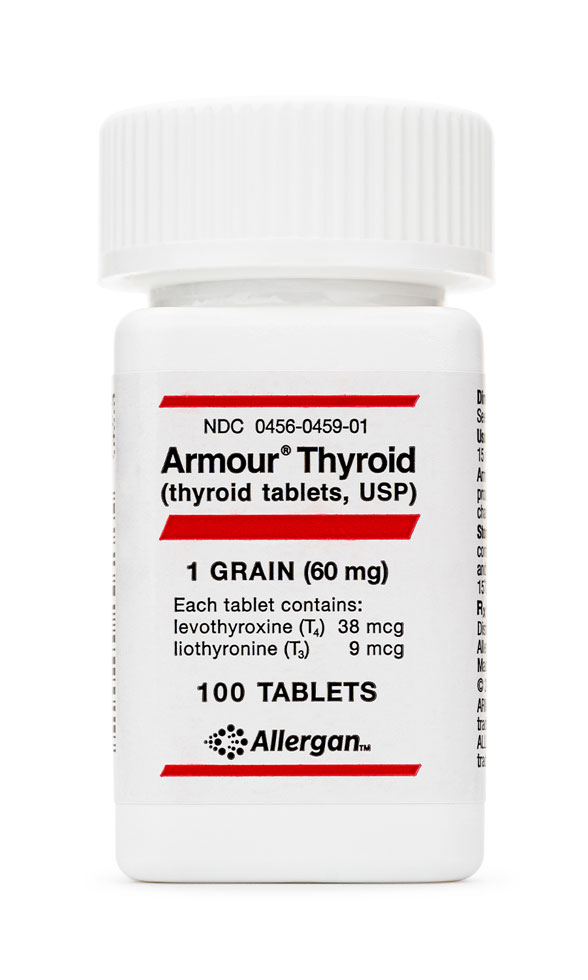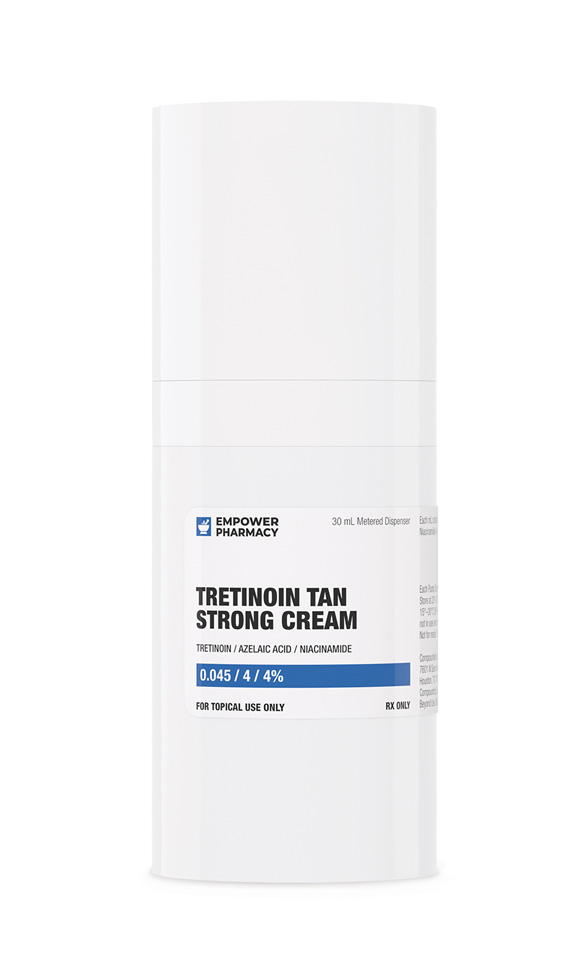- Description
- Reviews (0)
- Store Policies
- Inquiries
Description
Dosage Strengths of Topical Numbing Ointment
Topical Numbing 1 Ointment (Benzocaine / Lidocaine / Tetracaine) 20/10/10% 30 mL Pump;100 mL Jar
Topical Numbing 2 Ointment (Benzocaine / Lidocaine / Tetracaine) 20/6/6% 30 mL Pump;100 mL Jar
Topical Numbing 3 Ointment (Lidocaine / Tetracaine) 23/7% 30 mL Pump;100 mL Jar
Topical Numbing 4 Ointment (Lidocaine / Prilocaine / Phenylephrine HCl) 23/10/0.25% 30 mL Pump;100 mL Jar
Topical Numbing 5 Ointment (Lidocaine / Prilocaine / Phenylephrine HCl) 23/10/0.5% 30 mL Pump;100 mL Jar
Benzocaine; lidocaine; tetracaine is a combination of topical anesthetics used in application to accessible mucous membrane except the eyes. These products are used for topical anesthesia and mild pain control. Benzocaine, lidocaine and tetracaine are more likely than other local anesthetics to cause contact sensitization. The potential for sensitization increases with the duration of contact, and can be avoided with appropriate application technique. These products are not intended for prolonged application time or use.
Benzocaine, lidocaine, and tetracaine are local anesthetics that cause a reversible blockade of nerve conduction by decreasing nerve membrane permeability to sodium. This decreases the rate of membrane depolarization, thereby increasing the threshold for electrical excitability. The blockade affects all nerve fibers in the following sequence: autonomic, sensory, and motor, with effects diminishing in reverse order. Clinically, loss of function occurs as follows: pain, temperature, touch, proprioception, and skeletal muscle tone. Direct nerve membrane penetration is necessary for effective anesthesia, which is achieved by applying the anesthetic topically to the area to be anesthetized. While systemic absorption of local anesthetics can produce effects on the central nervous and cardiovascular systems, systemic absorption of benzocaine; lidocaine; tetracaine is expected to be minimal with appropriate use.
Safe use of benzocaine; lidocaine; tetracaine during pregnancy has not been established with respect to possible adverse effects upon fetal development. Manufacturers state that these products should not be used during early pregnancy, unless the healthcare provider judges the potential benefits outweigh the unknown hazards; routine precaution for the use of any topical anesthetic should be observed. A study by the American Dental Association provides some evidence that, when needed, the use of dental local or topical anesthetics at 13 weeks to 21 weeks of pregnancy or later is likely safe and does not raise incidences of adverse pregnancy outcomes or other adverse events; the study analyzed data from the Obstetrics and Periodontal Therapy (OPT) trial, a multicenter study of over 800 pregnant patients in the early to mid second trimester who received required dental procedures.
It is not known whether the components of benzocaine; lidocaine; tetracaine are excreted in human milk. However, when used appropriately, as a single dose applied topically to mucosal tissue, systemic absorption is expected to be minimal and unlikely to affect the nursing infant. In order to avoid infant ingestion, benzocaine; lidocaine; tetracaine should never be applied on or near the breast or nipple of a woman who is breastfeeding. Infant ingestion should be avoided because the benzocaine component has been associated with life threatening cases of methemoglobinemia in infants and children <= 2 years of age. This drug combination has not been evaluated by the American Academy of Pediatrics (AAP), however lidocaine is classified as usually compatible with breastfeeding if an alternative is needed. Consider the benefits of breastfeeding, the risk of potential infant drug exposure, and the risk of an untreated or inadequately treated condition. If a breastfeeding infant experiences an adverse effect related to a maternally ingested drug, healthcare providers are encouraged to report the adverse effect to the FDA.
Adapalene; Benzoyl Peroxide: Concurrent use of benzoyl peroxide and topical anesthetics may decrease the efficacy of the anesthetic. In a clinical study, an estimated 75% increase in patient-reported, prick-induced pain was noted in areas treated with both 5% benzoyl peroxide and 6% benzocaine cream as compared to areas treated with 6% benzocaine cream alone. Investigators attributed the decreased anesthetic effect to a breakdown of the benzocaine molecule by either or both benzoyl peroxide or benzoyl peroxide-derived free radicals. It is recommended that the skin area that is to be topically anesthetized have no previous treatment with benzoyl peroxide or that the skin is thoroughly washed prior to the application of the anesthetic.
Benzoyl Peroxide: Concurrent use of benzoyl peroxide and topical anesthetics may decrease the efficacy of the anesthetic. In a clinical study, an estimated 75% increase in patient-reported, prick-induced pain was noted in areas treated with both 5% benzoyl peroxide and 6% benzocaine cream as compared to areas treated with 6% benzocaine cream alone. Investigators attributed the decreased anesthetic effect to a breakdown of the benzocaine molecule by either or both benzoyl peroxide or benzoyl peroxide-derived free radicals. It is recommended that the skin area that is to be topically anesthetized have no previous treatment with benzoyl peroxide or that the skin is thoroughly washed prior to the application of the anesthetic.
Benzoyl Peroxide; Clindamycin: Concurrent use of benzoyl peroxide and topical anesthetics may decrease the efficacy of the anesthetic. In a clinical study, an estimated 75% increase in patient-reported, prick-induced pain was noted in areas treated with both 5% benzoyl peroxide and 6% benzocaine cream as compared to areas treated with 6% benzocaine cream alone. Investigators attributed the decreased anesthetic effect to a breakdown of the benzocaine molecule by either or both benzoyl peroxide or benzoyl peroxide-derived free radicals. It is recommended that the skin area that is to be topically anesthetized have no previous treatment with benzoyl peroxide or that the skin is thoroughly washed prior to the application of the anesthetic.
Benzoyl Peroxide; Erythromycin: Concurrent use of benzoyl peroxide and topical anesthetics may decrease the efficacy of the anesthetic. In a clinical study, an estimated 75% increase in patient-reported, prick-induced pain was noted in areas treated with both 5% benzoyl peroxide and 6% benzocaine cream as compared to areas treated with 6% benzocaine cream alone. Investigators attributed the decreased anesthetic effect to a breakdown of the benzocaine molecule by either or both benzoyl peroxide or benzoyl peroxide-derived free radicals. It is recommended that the skin area that is to be topically anesthetized have no previous treatment with benzoyl peroxide or that the skin is thoroughly washed prior to the application of the anesthetic.
Benzoyl Peroxide; Hydrocortisone: Concurrent use of benzoyl peroxide and topical anesthetics may decrease the efficacy of the anesthetic. In a clinical study, an estimated 75% increase in patient-reported, prick-induced pain was noted in areas treated with both 5% benzoyl peroxide and 6% benzocaine cream as compared to areas treated with 6% benzocaine cream alone. Investigators attributed the decreased anesthetic effect to a breakdown of the benzocaine molecule by either or both benzoyl peroxide or benzoyl peroxide-derived free radicals. It is recommended that the skin area that is to be topically anesthetized have no previous treatment with benzoyl peroxide or that the skin is thoroughly washed prior to the application of the anesthetic.
Benzoyl Peroxide; Sulfur: Concurrent use of benzoyl peroxide and topical anesthetics may decrease the efficacy of the anesthetic. In a clinical study, an estimated 75% increase in patient-reported, prick-induced pain was noted in areas treated with both 5% benzoyl peroxide and 6% benzocaine cream as compared to areas treated with 6% benzocaine cream alone. Investigators attributed the decreased anesthetic effect to a breakdown of the benzocaine molecule by either or both benzoyl peroxide or benzoyl peroxide-derived free radicals. It is recommended that the skin area that is to be topically anesthetized have no previous treatment with benzoyl peroxide or that the skin is thoroughly washed prior to the application of the anesthetic.
Chloroxylenol; Hydrocortisone; Pramoxine: Caution is advised if combining local anesthetics. The toxic effects of local anesthetics are additive. A major cause of adverse reactions appears to be excessive plasma concentrations, which may be due to accidental intravascular administration, slow metabolic degradation, or overdosage. In addition to additive toxic effects, rare and sometimes fatal cases of methemoglobinemia have been reported with the use of topical or oromucosal benzocaine-containing products. Clinicians should closely monitor patients for the development of methemoglobinemia when a combination local anesthetic is used during a procedure. If a patient becomes cyanotic or if elevated methemoglobin concentrations are suspected, immediately institute treatment to counteract methemoglobinemia (such as administration of methylene blue) as oxygen delivery is ineffective throughout the body until the condition is reversed. Patients who are receiving other drugs that can cause methemoglobin formation, such as prilocaine, are at greater risk for developing methemoglobinemia.
Dibucaine: Caution is advised if combining local anesthetics. The toxic effects of local anesthetics are additive. A major cause of adverse reactions appears to be excessive plasma concentrations, which may be due to accidental intravascular administration, slow metabolic degradation, or overdosage. In addition to additive toxic effects, rare and sometimes fatal cases of methemoglobinemia have been reported with the use of topical or oromucosal benzocaine-containing products. Clinicians should closely monitor patients for the development of methemoglobinemia when a combination local anesthetic is used during a procedure. If a patient becomes cyanotic or if elevated methemoglobin concentrations are suspected, immediately institute treatment to counteract methemoglobinemia (such as administration of methylene blue) as oxygen delivery is ineffective throughout the body until the condition is reversed. Patients who are receiving other drugs that can cause methemoglobin formation, such as prilocaine, are at greater risk for developing methemoglobinemia.
Ethyl Chloride: Caution is advised if combining local anesthetics. The toxic effects of local anesthetics are additive. A major cause of adverse reactions appears to be excessive plasma concentrations, which may be due to accidental intravascular administration, slow metabolic degradation, or overdosage. In addition to additive toxic effects, rare and sometimes fatal cases of methemoglobinemia have been reported with the use of topical or oromucosal benzocaine-containing products. Clinicians should closely monitor patients for the development of methemoglobinemia when a combination local anesthetic is used during a procedure. If a patient becomes cyanotic or if elevated methemoglobin concentrations are suspected, immediately institute treatment to counteract methemoglobinemia (such as administration of methylene blue) as oxygen delivery is ineffective throughout the body until the condition is reversed. Patients who are receiving other drugs that can cause methemoglobin formation, such as prilocaine, are at greater risk for developing methemoglobinemia.
Hydrocortisone; Pramoxine: Caution is advised if combining local anesthetics. The toxic effects of local anesthetics are additive. A major cause of adverse reactions appears to be excessive plasma concentrations, which may be due to accidental intravascular administration, slow metabolic degradation, or overdosage. In addition to additive toxic effects, rare and sometimes fatal cases of methemoglobinemia have been reported with the use of topical or oromucosal benzocaine-containing products. Clinicians should closely monitor patients for the development of methemoglobinemia when a combination local anesthetic is used during a procedure. If a patient becomes cyanotic or if elevated methemoglobin concentrations are suspected, immediately institute treatment to counteract methemoglobinemia (such as administration of methylene blue) as oxygen delivery is ineffective throughout the body until the condition is reversed. Patients who are receiving other drugs that can cause methemoglobin formation, such as prilocaine, are at greater risk for developing methemoglobinemia.
Pramoxine: Caution is advised if combining local anesthetics. The toxic effects of local anesthetics are additive. A major cause of adverse reactions appears to be excessive plasma concentrations, which may be due to accidental intravascular administration, slow metabolic degradation, or overdosage. In addition to additive toxic effects, rare and sometimes fatal cases of methemoglobinemia have been reported with the use of topical or oromucosal benzocaine-containing products. Clinicians should closely monitor patients for the development of methemoglobinemia when a combination local anesthetic is used during a procedure. If a patient becomes cyanotic or if elevated methemoglobin concentrations are suspected, immediately institute treatment to counteract methemoglobinemia (such as administration of methylene blue) as oxygen delivery is ineffective throughout the body until the condition is reversed. Patients who are receiving other drugs that can cause methemoglobin formation, such as prilocaine, are at greater risk for developing methemoglobinemia.
Adverse reactions are minimal with appropriate use of benzocaine; lidocaine; tetracaine products (i.e., as a single dose applied topically to mucosal tissue by a healthcare practitioner).
Adverse reactions caused by local anesthetics are more likely to occur in patients following prolonged self-medication (which is contraindicated), and present as a contact dermatitis characterized by erythema and pruritus which may progress to vesiculation and oozing. Localized allergic reactions may occur after prolonged or repeated use of any aminobenzoate anesthetic. Prolonged or occluded contact of the anesthetic to any site is not recommended as it increases the possibility of a serious allergic reaction, dehydration of the epithelium, or an escharotic effect. If manifestations of an allergic reaction such as rash (unspecified), urticaria, or edema occur, the drug should be discontinued. Unpredictable adverse reactions such as hypersensitivity or anaphylactoid reactions are extremely rare.
Excess methemoglobin concentrations have been reported in connection with benzocaine-containing products. If a patient receiving benzocaine; lidocaine; tetracaine becomes cyanotic or if elevated methemoglobin concentrations are suspected, immediately institute treatment to counteract methemoglobinemia (such as administration of methylene blue) as oxygen delivery is ineffective throughout the body until the condition is reversed. Symptom onset may occur within minutes to 1—2 hours after application and can occur with the first or subsequent applications. Closely monitor the patient for signs of methemoglobinemia (increased respiratory rate, shortness of breath, decreased blood oxygen saturation levels, cyanotic skin or lips) during the procedure and for at least 2 hours post-application. Of note, methemoglobinemia renders 2-wavelength pulse oximetry results unreliable and a co-oximeter should be used instead. Additionally, if a spray formulation is being used it should be applied judiciously as several factors influence the amount of benzocaine contained in a single spray (including manufacturer differences, varying concentrations, length of time actuator is depressed, residual container volume, and orientation of the spray). Development of methemoglobinemia may not be dose dependant as symptoms have been reported following a single spray. Severe cases of methemoglobinemia can result in death. Advise patients and caregivers of the signs and symptoms associated with cyanosis (such as: pale, gray, or blue-colored skin; headache; lightheadedness; dyspnea; anxiety; fatigue; and tachycardia), and instruct that they should seek immediate medical attention if they suspect methemoglobinemia. In April 2011, the FDA alerted the public and healthcare professionals of the risk of methemoglobinemia associated with the use of benzocaine oromucosal products. Benzocaine sprays used during medical procedures to numb the mucous membranes of the mouth and throat have been associated with methemoglobinemia. A total of 319 cases, including 32 life-threatening cases and 7 deaths, have been reported to the FDA.
Store this medication at 68°F to 77°F (20°C to 25°C) and away from heat, moisture and light. Keep all medicine out of the reach of children. Throw away any unused medicine after the beyond use date. Do not flush unused medications or pour down a sink or drain.
1.Cetacaine Topical Anesthetic (benzocaine; lidocaine; tetracaine) package insert. Pennsauken, NJ: Cetylite Industries, Inc.; 2013 Apr.
2.Exactacain Topical Anesthetic Spray (benzocaine; lidocaine; tetracaine) package insert. Cumberland, RI: Onset Therapeutics; 2008 Sep.
3.One Touch Advanced Topical Anesthetic Gel (benzocaine; lidocaine; tetracaine) package insert. Odessa, FL: Hager Worldwide; 2009 Jun.
4.Michalowicz BS, DiAngelis AJ, Novak MJ, et al. Examining the safety of dental treatment in pregnant women. J Am Dent Assoc. 2008;139:685-695.
5.FDA Drug Safety Communication: Reports of a rare, but serious and potentially fatal adverse effect with the use of over-the-counter (OTC) benzocaine gels and liquids applied to the gums or mouth. Retrieved April 7, 2011.
6.National Institutes of Health (NIH). Tetracaine monograph. LactMed: Drug and Lactation Database. Available at http://toxnet.nlm.nih.gov/cgi-bin/sis/search/f?./temp/~hiRQ6t:1. Accessed March 28th, 2012.
7.American Academy of Pediatrics (AAP) Committee on Drugs. Transfer of drugs and other chemicals into human milk. Pediatrics 2001;108:776-89.
8.Burkhart CG, Burkhart CN. Decreased efficacy of topical anesthetic creams in presence of benzoyl peroxide. Dermatol Surg 2005;31:1479-80.
9.FDA Drug Safety Communication: FDA continues to receive reports of a rare, but serious and potentially fatal adverse effect with the use of benzocaine sprays for medical procedures. Retrieved April 7, 2011.
10.Citanest Plain Dental (prilocaine hydrochloride) package insert. York, PA: Dentsply Pharmaceutical; 2010 Jun.
11.Moore TJ, Walsh CS, Cohen MR. Reported adverse event cases of methemoglobinemia associated with benzocaine products. Arch Intern Med 2004;164:1192-5.
Be the first to review “Topical Numbing Ointment”
General Inquiries
There are no inquiries yet.










Reviews
There are no reviews yet.